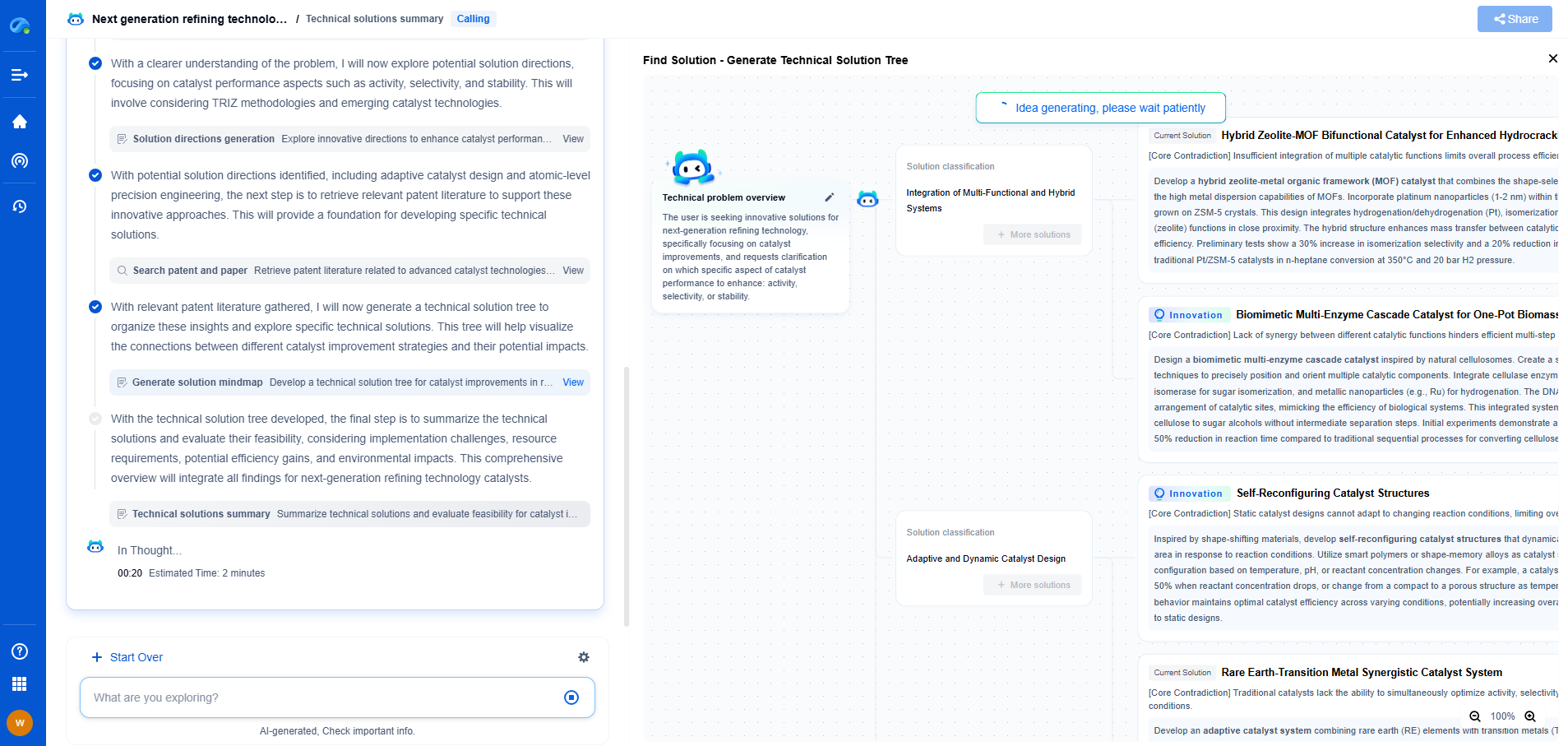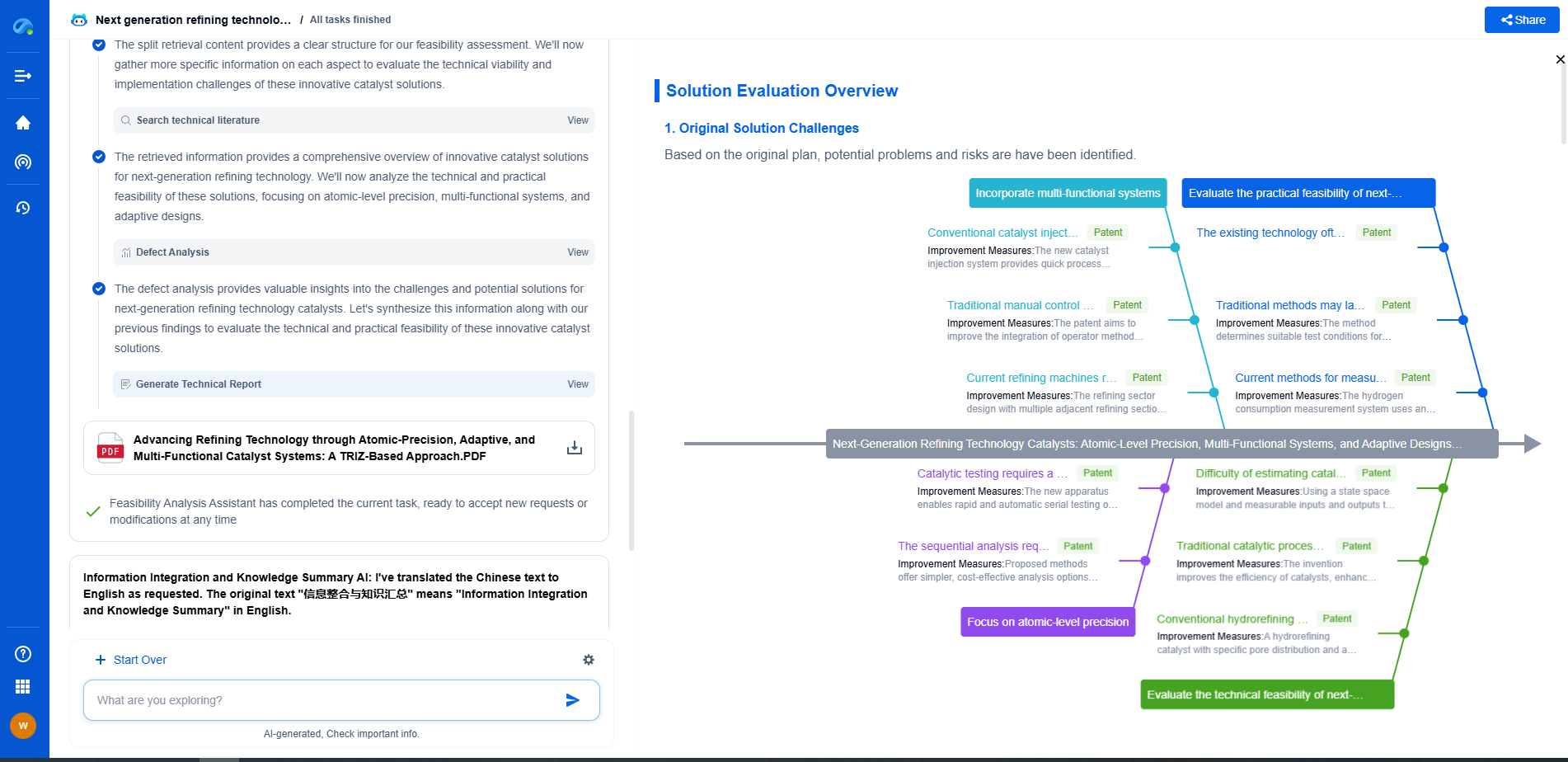FBD vs SFC: Which Control Representation Is More Effective for Complex Systems?
JUL 2, 2025 |
In the world of automation and control systems, choosing the right representation for programming can make a significant difference in the effectiveness and efficiency of system management. Two popular graphical representations are the Function Block Diagram (FBD) and the Sequential Function Chart (SFC). Both have their unique advantages and drawbacks, making the choice between them pivotal for system designers. This article delves into the core aspects of FBD and SFC to assess which is more effective for complex systems.
Understanding Function Block Diagrams (FBD)
Function Block Diagrams are a graphical language for describing the functions between input and output variables. They are widely used in the field of automation, particularly in programmable logic controllers (PLCs). FBDs utilize blocks that represent functions, which can be interconnected to illustrate the flow of data and signals.
Advantages of FBD
FBDs are intuitive and easy to understand, especially for engineers familiar with Boolean logic. Their graphical nature allows for straightforward visualization of system behavior, making debugging and troubleshooting relatively easier. Moreover, FBDs facilitate modular design, enabling the reuse of standard function blocks across different projects, which can save time and resources.
Limitations of FBD
Despite their clarity, FBDs can become unwieldy when dealing with highly complex systems that involve numerous conditions and interdependencies. The simplicity that makes them user-friendly can also lead to difficulties in representing intricate sequences and sophisticated logic.
Exploring Sequential Function Charts (SFC)
Sequential Function Charts provide a high-level overview of a process, breaking it down into steps and transitions. This makes SFC ideal for processes that are inherently sequential, such as batch processing or robotic operations. The SFC framework consists of steps that define specific states and transitions that determine the conditions for moving from one step to another.
Advantages of SFC
SFC excels in structuring complex processes that involve multiple states and transitions. Its graphical representation helps in clearly defining the sequence of operations, making it easier to manage and modify processes on-the-fly. By using a state-oriented approach, SFCs provide a more organized method for handling parallel processes and simultaneous operations.
Limitations of SFC
While SFCs are excellent for sequential tasks, they can become cumbersome when applied to systems that are not inherently sequential. The need to define every possible transition can lead to complexity and potential over-complication of simple tasks. Additionally, SFCs can require more initial development time due to their detailed nature.
Comparative Analysis: FBD vs. SFC
When evaluating FBD and SFC for complex systems, several factors should be considered:
1. System Complexity: For systems that are primarily combinatorial or involve simple feedback control, FBDs are often more effective due to their straightforward nature. Conversely, SFCs are better suited for systems that require detailed sequencing and involve multiple states.
2. Modularity and Reusability: FBDs offer significant benefits in terms of modularity, allowing engineers to reuse function blocks. This can be particularly beneficial in large-scale systems where standardization is key.
3. Debugging and Maintenance: SFCs provide a clear roadmap of sequences, making it easier to diagnose issues related to process flow and transitions. On the other hand, FBDs can simplify troubleshooting of logical errors due to their visual representation of logic gates and data flow.
Conclusion: Choosing the Right Tool
The decision between using FBD or SFC largely depends on the specific requirements and nature of the system being designed. For processes that are sequence-driven with multiple states, SFC offers an organized framework that can handle complexity effectively. Meanwhile, for systems where logic and data flow are primary concerns, FBD provides a user-friendly approach that simplifies development and maintenance.
Ultimately, the effectiveness of FBD or SFC in managing complex systems relies on the designer’s understanding of the system's needs and the strengths and weaknesses of each representation. By leveraging the right tool for the right job, engineers can create robust, efficient, and manageable control systems.
Ready to Reinvent How You Work on Control Systems?
Designing, analyzing, and optimizing control systems involves complex decision-making, from selecting the right sensor configurations to ensuring robust fault tolerance and interoperability. If you’re spending countless hours digging through documentation, standards, patents, or simulation results — it's time for a smarter way to work.
Patsnap Eureka is your intelligent AI Agent, purpose-built for R&D and IP professionals in high-tech industries. Whether you're developing next-gen motion controllers, debugging signal integrity issues, or navigating complex regulatory and patent landscapes in industrial automation, Eureka helps you cut through technical noise and surface the insights that matter—faster.
👉 Experience Patsnap Eureka today — Power up your Control Systems innovation with AI intelligence built for engineers and IP minds.
- R&D
- Intellectual Property
- Life Sciences
- Materials
- Tech Scout
- Unparalleled Data Quality
- Higher Quality Content
- 60% Fewer Hallucinations
Browse by: Latest US Patents, China's latest patents, Technical Efficacy Thesaurus, Application Domain, Technology Topic, Popular Technical Reports.
© 2025 PatSnap. All rights reserved.Legal|Privacy policy|Modern Slavery Act Transparency Statement|Sitemap|About US| Contact US: help@patsnap.com

